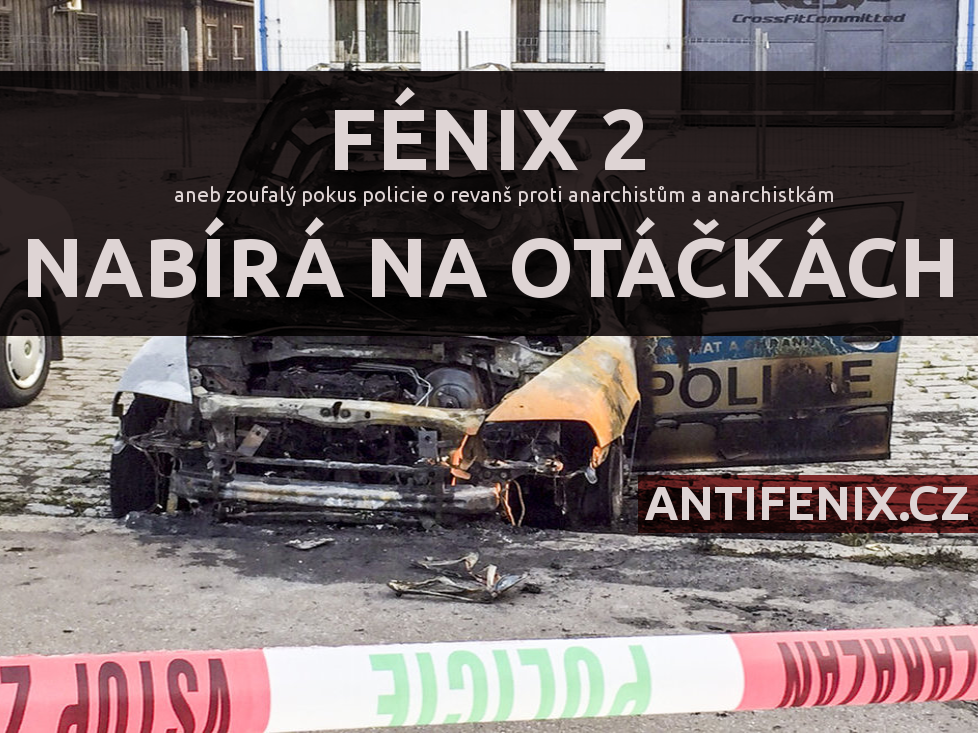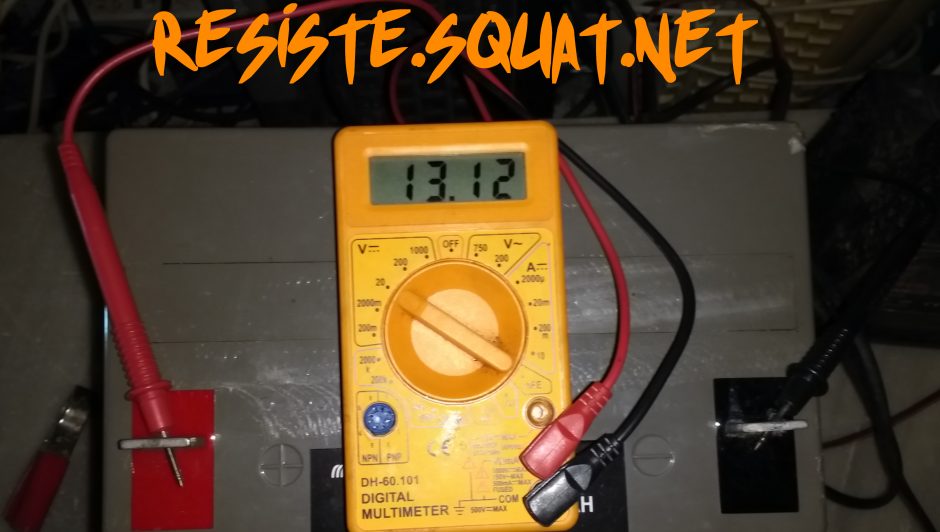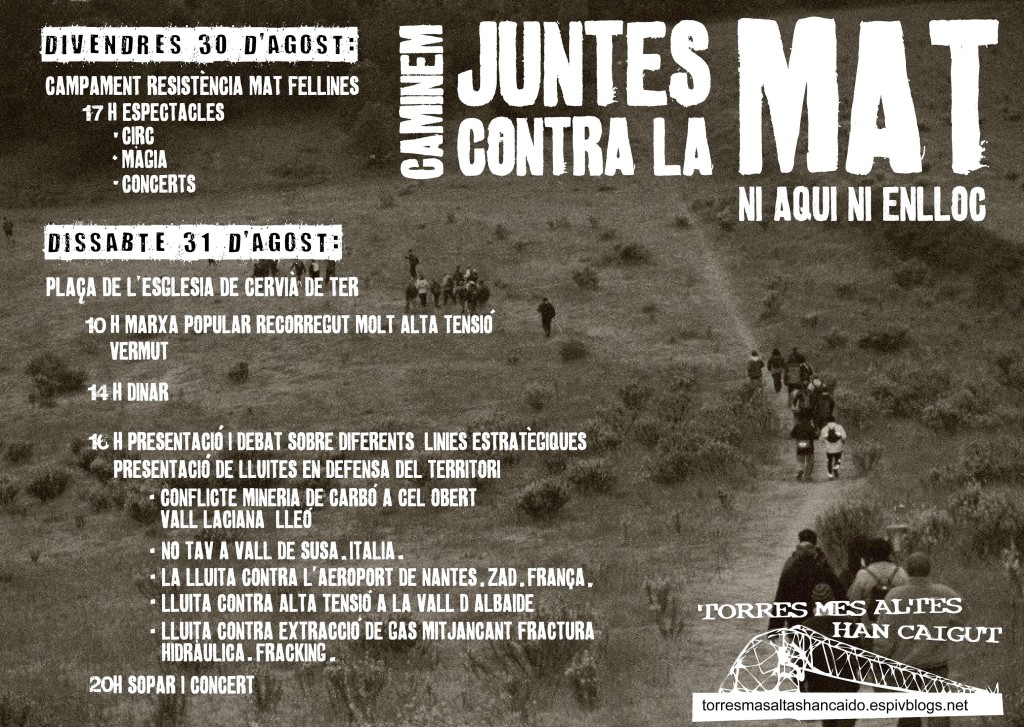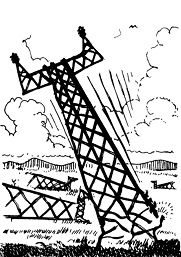What is Fénix 2 about

In April 2015, first accusations appeared and first part of Fénix started. In March 2018, Higher court in Prague dropped all the charges for all people involved in the case. Meanwhile, the second part of Fénix arrised and this article explains, what is it about.
From first to the second part
When the police started operation Fénix, some media claimed, that SRB (Network of Revolutionary Cells) was scattered. Yet sabotages and arson attacks continued and the amount of them raised. Soon, it became obvious, that it’s going to be hard to connect accused people with those activities, so the police started to “investigate”.
 They focused on interrogations, analyses of materials seized in home raids and also on tracking people. Among them, there was also an anarchist Lukáš Borl, who decided to go underground at the end of the summer, because of harassment of him and his close ones by the police. In the winter 2016 police profiled Lukáš as “wanted” and claimed as dangerous and armed. Since this moment, we can talk about the beginning of Fénix 2.
They focused on interrogations, analyses of materials seized in home raids and also on tracking people. Among them, there was also an anarchist Lukáš Borl, who decided to go underground at the end of the summer, because of harassment of him and his close ones by the police. In the winter 2016 police profiled Lukáš as “wanted” and claimed as dangerous and armed. Since this moment, we can talk about the beginning of Fénix 2.
 On 4th of October, Lukáš was captured in Most by police officer Zdeněk Prošek. He told him the charges, which he was accused of several months ago, without his presence. At that moment he found out, what they were about.
On 4th of October, Lukáš was captured in Most by police officer Zdeněk Prošek. He told him the charges, which he was accused of several months ago, without his presence. At that moment he found out, what they were about.
Lukáš was charged of creating, supporting and propagation a movement leading to suppression of rights and freedom of people. According to police, he should be at the foundation of The Network of Revolutionary Cells (SRB), participate on some actions of SRB, write down some of the communiques of SRB and publish all of them at Asociace Alerta website. Investigators also claim, he is responsible for destroying of property in four cases. Twice by burning police car. Once in arson attack on a door of a shop. And once by spray painting on the walls of Praha Ruzyně prison. At last, the police is claiming, that he blackmailed the owner of restaurant Řízkárna, who is infamous for not paying his employees. Later they added charges for creating fake documents. Specifically ID of citizen of Poland, which Lukáš had with him during the arrest.
Lukáš spent more than seven months in custody in the city of Litoměřice. Several weeks after his release, at 9th of June 2017, police accused four other people and it all became Fénix 2.
 It includes Martin Ignačák and Petr Sova, who were accused – and later acquitted – in the case Fénix I. The others are anarchist Lukáš Novák and environmentalist Tomáš Zelený. All together, they were charged in sixteen articles.
It includes Martin Ignačák and Petr Sova, who were accused – and later acquitted – in the case Fénix I. The others are anarchist Lukáš Novák and environmentalist Tomáš Zelený. All together, they were charged in sixteen articles.
Again we talk about the paragraph of creating, supporting and propagation a movement leading to suppression of rights and freedom of people. This time, police is not saying they are part of SRB, but three of them supposed to support and propagate SRB online. According to police, Petr Sova by publishing communiques on facebook and web of Voice of anarchopacifism. Tomáš Zelený on the website Green Action and Lukáš Novák on the website of Anarchocommunist alternative. Martin Ignačák and Lukáš Novák should also propagate movement leading to suppression of rights and freedom by distributing publications with texts about insurrectionalist anarchism, Informal anarchist federation (FAI), Conspiracy of cells of fire (CCF) and translations of Alfredo M. Bonnano texts.
What are the possibilities
All five people in Fénix 2 are charged with criminal offense with possibility to get from 3 to 10 years in prison. Lukáš Borl has some more charges from different delicts. We have no illusions and know, that the justice system can be blind, cruel and unfair. But meanwhile police is threating people with high punishments, they don’t have much in their hands to fulfill these threats. It more likely seems, that Fénix 2. is heading towards similar slap comedy as the first part. With a bit of a luck and our handiness, also this time the investigators could become absolute bunglers. There is no sense in writing down with what kind of a speculations they are operating and how to disprove them. Lets wait for the trial, which is for sure going to be yet another embarrassing theater.

By looking at the expansive files and length of investigation, it might seem, that it’s about something really big. But sometimes things are not how they appear. Files are full of ballast and investigators didn’t do any steps for several months. Preparation procedures were finished at summer 2018 and by December 2018, general attorney made accusations at the local court in Most. Courts will take place on the 8th, the 10th and the 12th of April 2019. So far we can see certain quandary of the police and the general attorney. That’s probably why they choose at least the impede tactics. They know, with what they have, it will be difficult to send someone to prison. That’s why they at least keep the accused ones in doubts, stress and tension. It creates pressure not only on them. There is a discouraging message to all, who are resisting to the present political system. A warning that says: “Keep your head down, otherwise you will face the same inconvenience.”
Trial with the accused in Fenix 2
On April 8th, 10th and 12th, 2019, the trial with 4 anarchists and one environmentalist accused in operation Fenix 2 will be taking place at the district court of Most, every day at 8:30 a.m. Come to support them at the courthouse or by any solidarity action. Let them know you are not apathetic to their future as you are not towards the freedom of all of us. Any way of expressing support is welcomed!
[DEU]
Worum geht es bei Phoenix 2?
Im April 2015 gab es viele Anklagen gegen AktivistInnen, womit der erste Teil des sogenannten Falls “Phoenix“ begann. Dies alles zog sich bis März 2018 hin, als der Oberste Gerichtshof in Prag den Freispruch aller Angeklagten bestätigte. In der Zeit, als Phoenix in vollem Gange war, kam es zur Eröffnung seines zweiten Teils. Dieser Artikel erklärt, worum es dabei ging.
Vom Ersten zum Zweiten
Als die Polizei mit dem Fall Phoenix begann, behaupteten einige Medien, dass sich die SRB („siť revolučních buňek“ – das Netzwerk der revolutionären Zellen) zerschlagen hätte. Sabotageaktionen und Brandanschläge gingen jedoch weiter und ihre Häufigkeit nahm sogar zu. Bald wurde klar, dass es nicht leicht wird, die Angeklagten mit den Aktivitäten der SRB in Verbindung zu bringen. Deshalb setzte die Polizei ihre “Ermittlungen“ fort.
Sie konzentrierten sich dabei auf Verhöre, Auswertungen von während der Ermittlungen beschlagnahmten Materials und der Beobachtung von Personen.
Unter ihnen befand sich auch der Anarchist Lukáš Borl, der sich im Spätsommer wegen seiner ständigen Überwachung und der Belästigung seiner Angehörigen und Nahestehenden entschied in den Untergrund abzutauchen.
Im Winter 2016 veröffentlichte die Polizei das Fahndungsprofil von Lukáš, in dem er als eine gefährliche und bewaffnete Person präsentiert wurde. Dieser Punkt kann als der Anfang von Phoenix 2 betrachtet werden.
Am 4. September 2016 wurde Lukáš von einem ehemaligen Schulkamaraden, dem Polizisten Zdeněk Prošek, festgenommen. Es wurde Lukáš mitgeteilt, dass er schon mehrere Monate vor seiner Festnahme in seiner Abwesenheit angeklagt worden sei. Erst jetzt allerdings fand er heraus, worum es sich bei der Anklage handelte.
Lukáš Borl wurde vorgeworfen eine Bewegung gegründet, unterstützt und gefördert zu haben, die dazu führe die Freiheit und Rechte von Menschen zu unterdrücken.
Nach Angaben der Polizei soll er sich an der Gründung des Netzwerkes der revolutionären Zellen (SRB) beteiligt haben, sowie an einigen ihrer Aktionen. Ebenso soll er SRB-Mitteilungen verfasst haben, die er dann auf der Internetseite der Alerta Assoziation veröffentlicht haben soll. Die Ermittler behaupten darüber hinaus, er sei vier Mal des Deliktes der Sachbeschädigung schuldig. Darunter seien zwei Mal das Abbrennen von Polizeiautos, einmal der Brandanschlag auf eine Ladentür und einmal das Sprayen zweier Schriftzüge auf die Mauer des Gefängnises im Stadtteil Ruzyně in Prag. Außerdem behauptet die Polizei, er hätte den Betreiber des Schnitzelrestaurants “Řízkárna“ erpresst, welcher dafür bekannt war, seinen Angestellten ihren Lohn nicht auszuzahlen. Später wurde er auch wegen Dokumentenfälschung angeklagt, was den Ausweis eines polnischen Bürgers betreffen soll, den Lukáš während siner Verhaftung bei sich trug.
Lukáš verbrachte mehr als sieben Monate in Untersuchungshaft im Gefängnis in Litoměřice. Einige Wochen nach seiner Freilassung am 9. Juni 2017 begann die Poizei mit der Fahndung nach vier weiteren Personen im Zusammenhang mit dem Fall Phoenix 2.
Dabei handelt es sich um Martin Ignačák und Petr Sova, die schon im ersten Teil von der Operation Phoenix angeklagt und später freigesprochen wurden. Ebenfalls sind der Anarchist Lukáš Novák und der Umweltschützer Tomáš Zelený betroffen, deren Anklagen sich aus sechzehn Straftaten zusammensetzen.
Abermals wurde hier ein Paragraf zum Aufbau und zur Unterstützung einer Bewegung, die zur Unterdrückung von Rechten und der Freiheit von Menschen führe, herbeigezogen. In diesem Fall behauptet die Polizei jedoch nicht, die Angeklagten seien Mitglieder der SRB, sondern dass drei von ihnen die SRB unterstützt und gefördert hätten.
Demnach soll Petr Sova dies mit der Veröffentlichung eines Artikels der SRB auf der Internet- und Facebookseite von Voice of Anarchopacifism getan haben, während Tomáš Zelený den Artikel auf der Internetseite von Green Action veröffentlicht haben soll und Lukáš Novák auf der Seite der Anarchokommunistischen Alternative. Nach Angaben der Polizei wurde die Bewegung, die darauf abzielte Rechte und die Freiheit der Menschen zu unterdrücken ebenfalls von Martin Ignačák und Lukáš Novák dadurch gefördert, dass sie Publikationen von Texten zum Thema des aufständigen Anarchismus, der Nichtformellen Anarchistischen Föderation (FAI), der Verschwörung der Feuerzellen (CCF) und Übersetzungen einiger Texte von Alfred M. Bonannan, veröffentlicht haben sollen.
Was droht?
Allen 5 Angeklagten im Fall Phoenix 2 droht eine Haftstrafe von drei bis zehn Jahren. Lukáš Borl ist darüber hinaus auch noch wegen verschiedener anderer Delikte angeklagt. Wir machen uns keine Illusionen und wissen, dass die staatliche Justizanstalt blind, grausam und ungerecht ist. Während aber die Polizei mit hohen Freiheitsstrafen droht hat sie dennoch viele Faktoren nicht in der Hand, die ihr helfen würden, diese Drohungen wahr werden zu lassen.
Es sieht hier vielmehr danach aus, als verweise Phoenix 2 auf die gleiche Farce, wie sein Vorgänger. Mit einbisschen Glück und Geschicklichkeit könnten auch dieses Mal die Ermittler als inkompetente Betrüger hervorgehen. Es macht an dieser Stelle keinen Sinn aufzulisten, welche Spekulationen sich die Polizei alle ausgedacht hat und wie diese widerlegt werden können. Das wird sich uns alles bald bei der Gerichtsverhandlung enthüllen, die sicherlich eine weitere absurde Theatervorstellung darbieten wird.
Den Aktenumfang und den Zeitraum der Investigationen betrachtend, macht es den Anschein, als würde es sich um eine wirklich große Angelegenheit handeln. Manchmal trügt der Schein jedoch. Die Akte ist voll von Ballast und die Ermittler kamen seit Monaten zu keinen Ergebnissen. Die Vorbereitungen des Gerichtsverfahrens wurden erst im Sommer 2018 abgeschlossen und der Saatsanwalt reichte die Anklage beim Bezirksgericht von Most erst im Dezember 2018 ein.
Es ist eine gewisse Hilf- und Ratlosigkeit von Seiten der Polizei und des Anklägers festzustellen. Deshalb wählen sie wohl eine Verzögerungstaktik.
Sie wissen, dass es mit dem, was sie in der Hand haben, schwer wird jemanden hinter Gitter zu bringen. So lassen sie die Angeklagten in einer dauerhaften Situation von Unsicherheit, Stress und Anspannung. Dies dient nicht nur dazu, Druck auf die Angeklagten selbst auszuüben.
Es enthält auch eine einschüchternde Nachricht an alle, die sich gegen das derzeitig herrschende System aussprechen. Eine Art Warnung im Stil von: „Haltet’s Maul und haltet Schritt, sonst erwartet euch das gleiche Schicksal!“
Der Prozess gegen die Angeklagten der Operation Phoenix 2
Am 8., 10. und 12. April 2019 findet die Gerichtsverhandlung mit den vier Angeklagten Anarchisten und einem Umweltschützer der Operation Phoenix 2 statt. Unterstützt die Angeklagten direkt bei der Gerichtsverhandlung oder durch eine andere solidarische Aktion!
Bringt zum Ausdruck, dass euch ihre Zukunft ebensowenig egal ist, wie die Freiheit von uns allen! Jede Äußerung von Unterstützung der Angeklagten ist willkommen!
Die Gerichtsverhandlung findet an jedem der Tage ab 8:30 Uhr im Bezirksgericht Most statt.
[FRA]
Qu’est ce qu’est l’opération Fénix 2
Les premières accusations sont tombées en avril 2015 : le premier volet de l’opération répressive « Fénix » commençait. En mars 2018, la Court suprême de Prague a laissé tomber toutes les accusations pour toutes les personnes inculpées. Entre-temps, le deuxième volet de l’opération est apparu ; ce texte explique de quoi il s’agit.
Quand la police a commencé l’opération Fénix, certains médias ont déclaré que le SRB (Réseau des Cellules Révolutionnaires) était en déroute. Cependant, les sabotages et les attaques incendiaires ont continué et leur coûts ont augmenté. Cela est devenu bientôt évident qu’il allait devenir difficile de lier les personnes inculpées avec ces actes, du coup la police a commencé à « enquêter ».
Il se sont concentrés sur les interrogatoires, sur les analyses du matériel saisi pendant les perquisitions et aussi sur la filature des gens. Parmi ces personnes, il y avait aussi l’anarchiste Lukàš Borl, qui a décidé de se mettre au vert à la fin de l’été, à cause du harcèlement que lui et ses proches subissaient de la part de la police. Pendant l’hiver 2016, la police a déclaré Lukàš « recherché » et a dit qu’il était armé et dangereux. A partir de ce moment, on peut parler de début de Fénix II.
Le 4 octobre, Lukàš a été arrêté a Most par le policier Zdeněk Prošek, qui avait été son camarade d’école. Il lui a énoncé les chefs d’accusation dont il avait été chargé plusieurs mois plus tôt, en son absence. En ce moment il découve ce qu’ils préparent.
Lukàš a été accusé d’avoir « crée, soutenu et diffusé un mouvement visant à la suppression des droits et de la liberté des gens ». Selon la police, il était à l’origine du Réseau de Cellules Révolutionnaires (SRB), il aurait participé à certaines de leurs actions et écrit certains de leurs communiqués, et il les aurait tous publié sur le site Asociale Alerta. Les enquêteurs prétendent qu’il est responsable de « destruction de bien d’autrui», à quatre reprises. Deux fois pour des incendies de voitures de flics. Une pour l’attaque incendiaire contre une porte de magasin. Et une pour des tags sur un mur de la prison de Ruzyně à Prague. Enfin, la police prétend qu’il a fait du chantage au propriétaire du restaurant Řízkárna, bien connu pour ne pas payer ses employé.e.s. Ensuite, ils ont ajouté l’accusation de fabrication de faux papiers. Plus précisément une carte d’identité polonaise, que Lukàš avait sur soi lors de son arrestation.
Lukàš a passé plus de sept mois en détention provisoire à Litoměřice. Plusieurs semaines après qu’il a été relâché, le 9 juin 2017, la police a mis sous accusation quatre autre personnes, et ce là qu’a commencé Fénix II.
On y trouve Martin Ignačák et Petr Sova, qui étaient inculpés, puis acquittés, dans l’affaire Fénix I. Les autres sont l’anarchiste Lukàš Novak et le militant environnementaliste Tomáš Zeleny. Tous ensemble, ils ont été accusés de seize chefs d’inculpations.
On parle à nouveau de l’accusation de création, soutien et diffusion d’un mouvement visant à la suppression des droits et de la liberté des gens . Cette fois, la police ne dit pas qu’ils font partie des SRB, mais trois d’entre eux sont présumés coupables d’avoir soutenu les SRB et d’en avoir fait la propagande en ligne. Selon la police, Petr Sova aurait publié leurs communiqués sur Facebook et sur la page web Voice of anarchopacifism. Tomáš Zeleny sur le site Green Action et Lukàš Novak sur le site d’Anarchocommunist alternative. Martin Ignačák et Lukáš Novák auraient aussi fait de la propagande pour un mouvement visant à la suppression des droits et de la liberté, en diffusant des publications contenant des textes à propos de l’anarchisme insurrectionnaliste, la FAI, la CCF, et des traductions d’Alfredo Bonanno.
Quelles sont les développements possibles
Toutes les cinq personnes inculpées dans l’affaire Fénix II sont poursuivies pour des délits qui vont de 3 à 10 ans de prison. Lukáš Borl a quelques chefs d’inculpation en plus pour d’autres délits. Nous ne nous faisons pas d’illusions et savons que le système judiciaire peut être aveugle, cruel et arbitraire. Mais même si la police menace des personnes avec des dures condamnations, ils n’ont pas beaucoup d’éléments en main pour exécuter ces menaces. Il semble plus probable que Fénix II se dirige vers le même final de comédie burlesque que la première partie. Avec un petit peu de chance et d’habilité de notre part, les enquêteurs passeront cette fois encore pour des incapables complets. Cela ne sert à rien de décrire les spéculations avec lesquelles ils travaillent et comment les réfuter. Attendons pour cela le procès, qui deviendra sûrement encore un autre théâtre embarrassant.
Si on regarde les grands dossiers et la longueur des investigations, il peut paraître qu’on parle de quelque chose de très gros. Mais parfois les choses ne sont pas comme elles apparaissent. Les dossiers sont remplis de poids morts et les enquêteurs n’ont rien fait pendant des mois. Les procédures de préparation ont été terminée pendant l’été 2018 et en décembre 2018, le Procureur a présenté les accusations au tribunal de Most. Le procès aura lieu le 8, le 10 et le 12 avril. Jusqu’ici, on peut remarquer un dilemme de la police et du Proc’. Cela est probablement la raison pourquoi ils ont choisi à minima la technique de l’usure. Ils savent que, avec ce qu’ils ont, ça sera difficile d’envoyer quelqu’un en taule. Voilà pourquoi ils gardent au moins les inculpés dans le doute, le stress et la tension. Cela crée de la tension, pas seulement sur ceux-ci. Il y a un message démoralisant pour tous ceux qui résistent contre le système politique actuel. Un avertissement qui dit : « Gardez votre tête baissée, sinon vous vous trouverez face aux mêmes désagréments ».
[ITA]
Le prime accuse sono arrivate nell’aprile 2015: cominciava così la prima parte dell’operazione Fenix. Nel marzo 2018, la Corte suprema di Praga ha lasciato cadere tutte la accuse contro tutte le persone coinvolte in questo caso. Nel frattempo, è cominciata la seconda parte di Fenix. Questo testo spiega di cosa si tratta.
Dalla prima alla seconda parte
Quando la polizia ha lanciato l’operazione Fenix, alcuni media hanno annunciato che la SRB (Rete di Cellule Rivoluzionarie) era stata dispersa. Ciononostante, i sabotaggi e gli attacchi incendiari sono continuati, il loro numero è aumentato. È presto diventato ovvio che sarebbe stato difficile associare gli accusati a queste azioni, così la polizia ha incominciato ad “investigare”.
Si sono concentrati sugli interrogatori, sulle analisi del materiale sequestrato durante le perquisizioni ed anche sulle filature dei compas. Fra questi vi era pure l’anarchico Lukáš Borl, che ha deciso di entrare in clandestinità alla fine dell’estate, a causa delle vessazioni da parte della polizia ai suoi danni ed ai danni dei suoi cari. Nell’inverno 2016, la polizia ha spiccato un mandato di cattura contro Lukáš, descritto come armato e pericoloso. A partire da quel momento, possiamo parlare dell’inizio dell’operazione Fenix II.
Il 4 ottobre, Lukáš è stato arrestato a Most dal poliziotto Zdeněk Prošek. Questi gli ha letto i capi d’imputazione, di cui Lukáš era stato accusato molti mesi prima, in sua assenza. Lukáš ha scoperto solo in quel momento di cosa si trattava.
Lukáš era stato accusato della “creazione, sostengo e propaganda di un movimento tendente alla soppressione dei diritti e delle libertà pubbliche”. Secondo la polizia, era all’origine della Rete di Cellule Rivoluzionarie (SRB), aveva partecipato ad alcune sue azioni, scritto alcuni dei comunicati della SRB e li aveva pubblicati tutti sul sito internet Asociaice Alerta. Gli inquirenti sostengono inoltre che sarebbe responsabile di quattro distruzioni di proprietà privata. In due casi si tratta di incendi di macchine della polizia. In un caso si tratta si un attacco incendiario contro l’entrata di un negozio. L’ultimo è una scritta su un muro della prigione Ruzyně, a Praga. Per finire, la polizia sostiene che ha ricattato il proprietario del ristorante Řízkárna, conosciuto per non pagare i suoi dipendenti. Più tardi, hanno aggiunto l’accusa di falsificazione di documenti. In particolare di una carta d’identità polacca, che Lukáš aveva con sé al momento dell’arresto.
Lukáš ha passato più di sei mesi in detenzione preventiva a Litoměřice. Diverse settimane dopo che era uscito di galera, il 9 giugno 2017, la polizia ha messo sotto accusa altre quattro persone: ecco il caso Fenix II.
Vi sono coinvolti anche Martin Ignačák e Petr Sova, accusati – poi assolti – nel caso Fenix I. Gli altri imputati sono l’anarchico Lukáš Novák e l’ecologista Tomáš Zelený. Sono tutti accusati di una serie di sedici capi d’imputazione.
Si tratta di nuovo dell’articolo a proposito della creazione, sostegno e propaganda di un movimento tendente alla soppressione dei diritti e delle libertà pubbliche. Questa volta la polizia non dice che i cinque fanno parte della SRB, ma tre di loro sono accusati di aver sostenuto e fatto della propaganda per la SRB online. Secondo la polizia, Petr Sova ne ha pubblicato dei comunicati su Facebook e sul sito di Voice of anarchopacifism. Tomáš Zelený li avrebbe pubblicati sul sito Green Action e Lukáš Novák sul sito di Anarchocommunist alternative. Martin Ignačák e Lukáš Novák avrebbero pure loro fatto della propaganda per un movimento tendente alla soppressione dei diritti e delle libertà pubbliche, diffondendo delle pubblicazioni con testi sull’anarchismo insurrezionale, sulla Federazione Anarchica Informale (FAI), sulla Cospirazione delle Cellule di Fuoco e delle traduzioni di testi di Alfredo Bonanno.
Cosa può succedere
Le cinque persone coinvolte nel caso Fenix II sono accusate di delitti le cui pene vanno dai 3 ai 10 anni di prigione. Lukáš Borl ha qualche accusa in più, per altri delitti. Non ci facciamo illusioni e sappiamo che il sistema giuridico può essere cieco, crudele ed iniquo. Ma anche se la polizia minaccia della gente di lunghe condanne, non hanno molto in mano per realizzare tali minacce. Sembra più probabile che Fenix II finisca in una pagliacciata, come la prima parte. Con un po’ di fortuna e di capacità da parte nostra, anche questa volta gli inquirenti si copriranno di ridicolo. Non serve a nulla scrivere a proposito delle loro speculazioni e del modo per smascherarle. Aspettiamo il processo, che sarà sicuramente un altro teatrino.
Guardando la mole degli atti e la lunghezza dell’inchiesta, sembrerebbe che si tratti di qualcosa di davvero grosso. Ma a volte le cose non sono come sembrano. Gli atti sono pieni di sciocchezze e gli inquirenti non hanno fatto nulla per mesi. Le procedure preparatorie erano già finite nell’estate 2018 e nel dicembre 2018 la Procura ha deposto le accuse al tribunale di Most. Il processo si terrà l’8, il 10 ed il 12 aprile 2019. Per quanto ne sappiamo, vi è un certo imbarazzo all’interno di polizia e Procura. Si tratta probabilmente della ragione per cui hanno scelto la tecnica dell’usura. Sanno che con quello che hanno in mano è difficile mandare qualcuno in galera. Ecco perché mantengono le persone sotto processo nel dubbio, sotto stress ed in tensione. La pressione non si fa sentire solo dagli accusati. Vi è un messaggio che vuole scoraggiare tutti quelli che resistono al sistema politico presente. Un avvertimento che dice: “Tieni la testa china, altrimenti ti troverai di fronte agli stessi inconvenienti”.
(tradotto da guerresociale)


 Radio Blackout – Torino
Radio Blackout – Torino Radio Bronka – Barcelona
Radio Bronka – Barcelona Radio Klaxon – ZAD Notre Dame de Landes
Radio Klaxon – ZAD Notre Dame de Landes Police Spies Out of Lives
Police Spies Out of Lives Contrainformación Anarquista
Contrainformación Anarquista Luca Zanette
Luca Zanette The anarchist library
The anarchist library Khimki Forest
Khimki Forest No Mat Catalunya – Campada
No Mat Catalunya – Campada No THT France
No THT France NoTav
NoTav ZAD – NotreDame de Landes
ZAD – NotreDame de Landes Usurpa!
Usurpa!